Abstract
Public service advertisements have been used by many in hopes of "selling" good health behaviors. But selling good behavior--even if it could be done more effectively--is not the best goal for using mass media to prevent health problems. Personal behavior is only part of what determines health status. Social conditions and the physical environment are important determinants of health that are usually ignored by health promotion advertising. Public service advertising may be doing more harm than good if it is diverting attention from more effective socially based health promotion strategies. Counter-ads are one communications strategy that could be used to promote a broader responsibility for rectifying health problems. In the tradition of advocacy advertising directly promoting policy rather than products, counter-ads promote views consistent with a public health perspective. Counter-ads set the agenda for health issues, conferring status on policy-oriented strategies for addressing health problems. The primary purpose of counter-ads is to challenge the dominant view that public health problems reflect personal health habits. They are controversial because they place health issues in a social and political context. Advertising strategies for health promotion range over a spectrum from individually oriented public service advertising to socially oriented counter-advertising. The recent anti-tobacco campaign from the California Department of Health Services represents advertisements across the spectrum. Counter-ads that focus on a politically controversial definition for health problems are an appropriate and necessary alternative to public service advertising.
Full text
PDF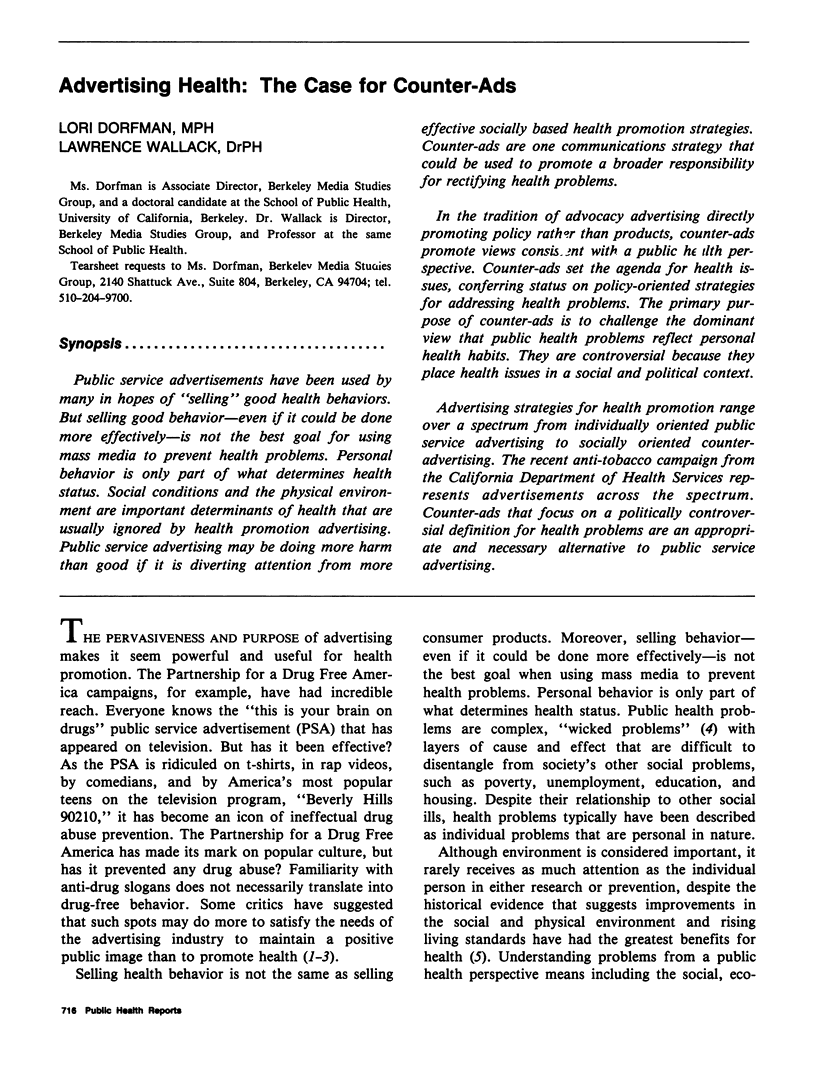
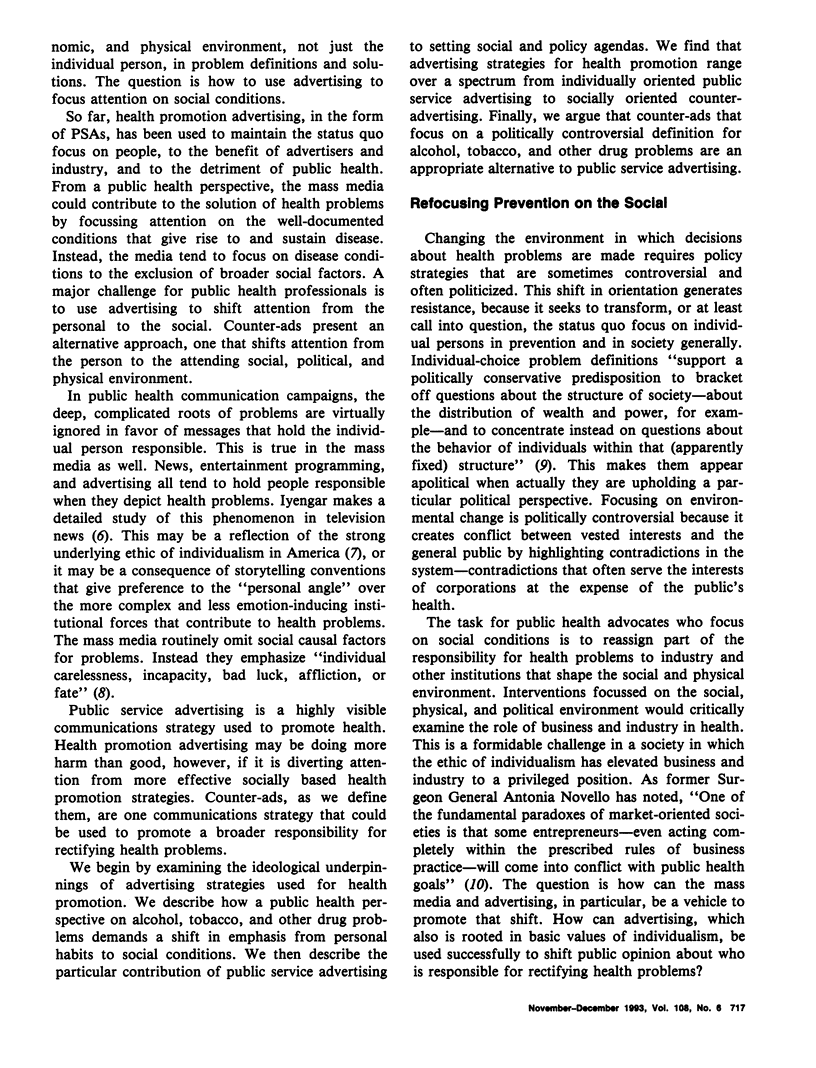
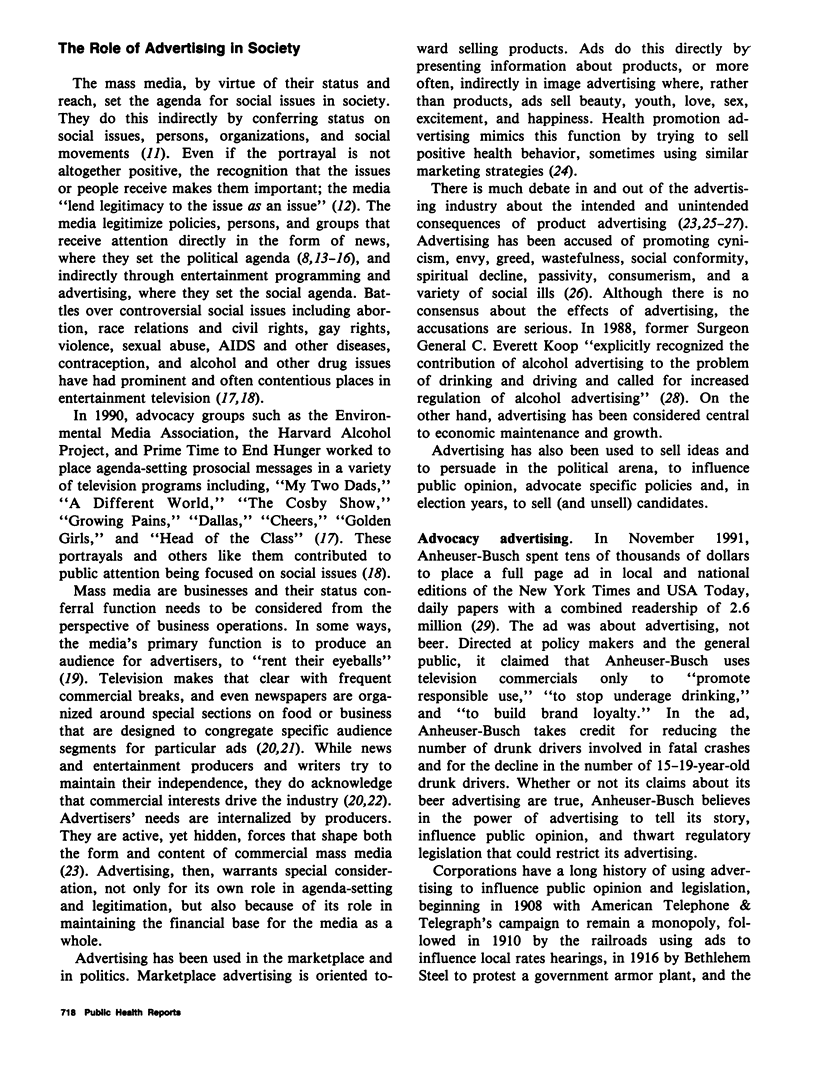

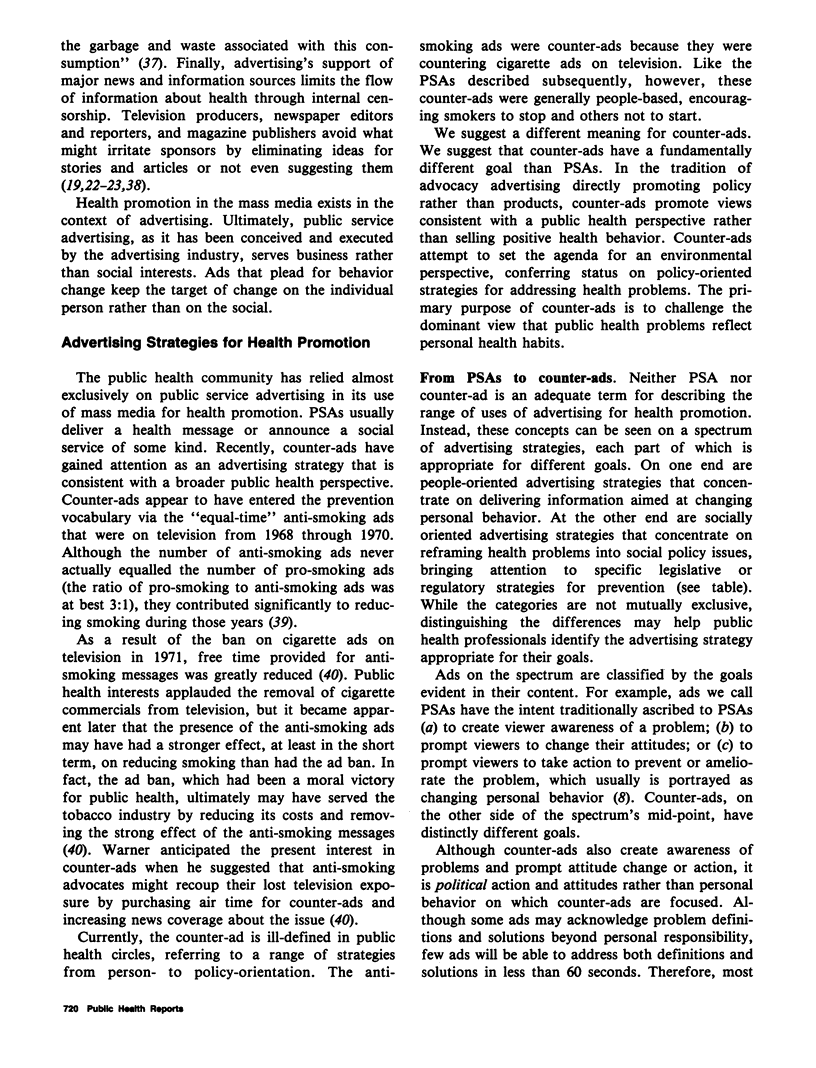
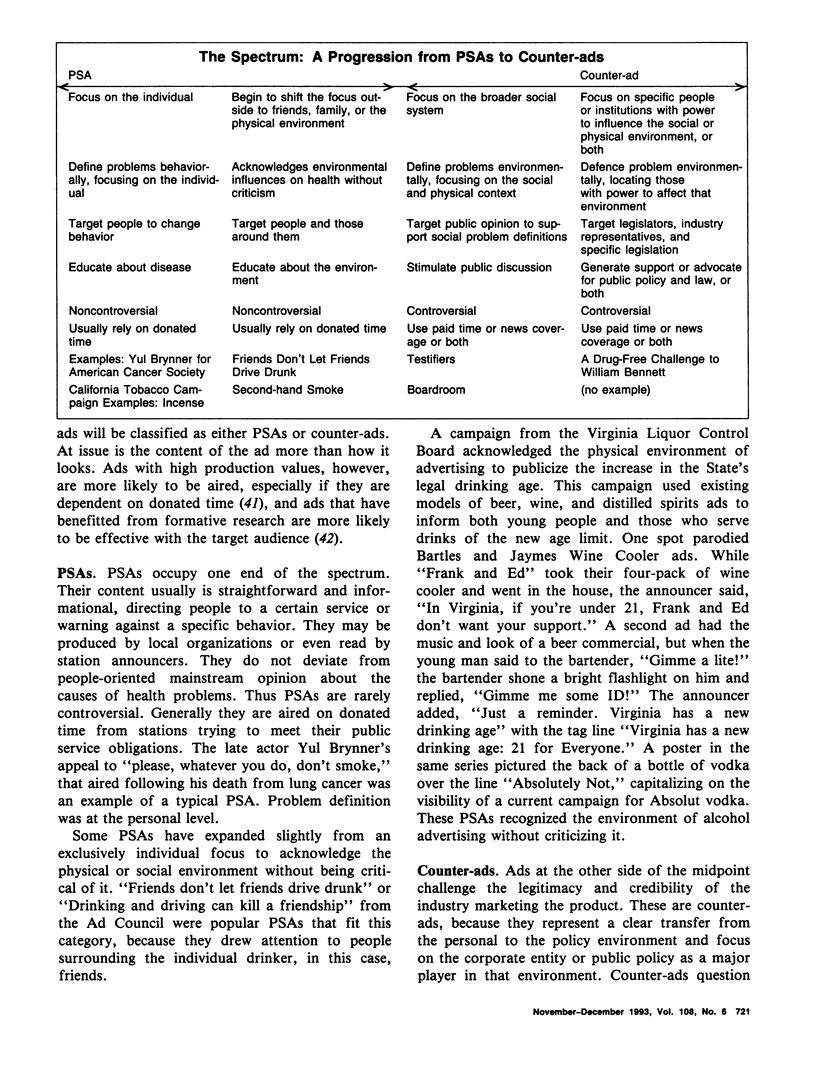
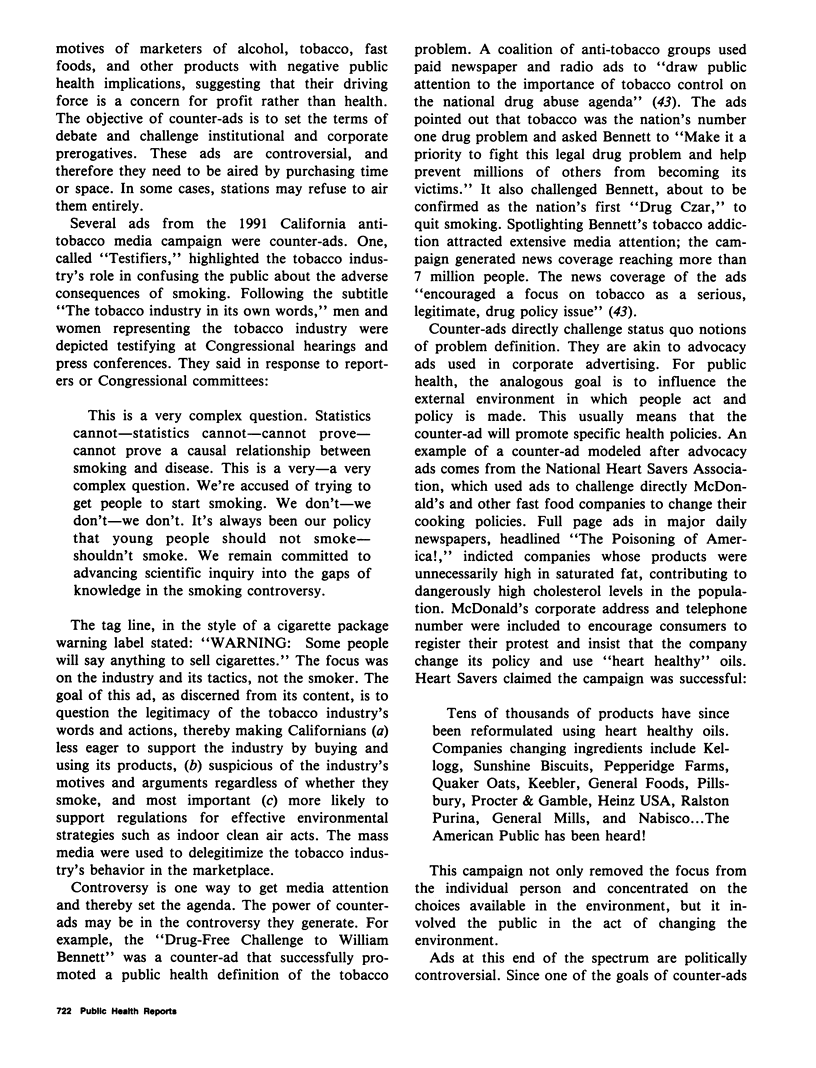



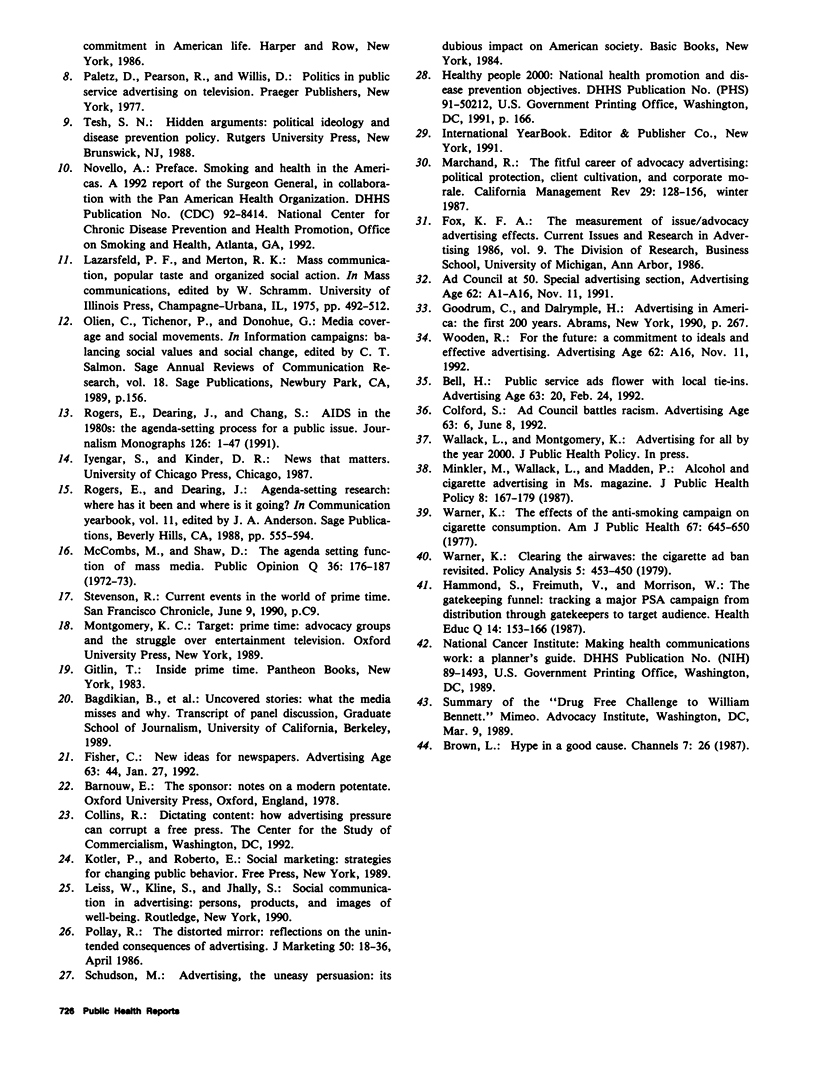
Selected References
These references are in PubMed. This may not be the complete list of references from this article.
- Hammond S. L., Freimuth V. S., Morrison W. The gatekeeping funnel: tracking a major PSA campaign from distribution through gatekeepers to target audience. Health Educ Q. 1987 Summer;14(2):153–166. doi: 10.1177/109019818701400203. [DOI] [PubMed] [Google Scholar]
- Minkler M., Wallack L., Madden P. Alcohol and cigarette advertising in Ms. magazine. J Public Health Policy. 1987 Summer;8(2):164–179. [PubMed] [Google Scholar]
- Warner K. E. The effects of the anti-smoking campaign on cigarette consumption. Am J Public Health. 1977 Jul;67(7):645–650. doi: 10.2105/ajph.67.7.645. [DOI] [PMC free article] [PubMed] [Google Scholar]


